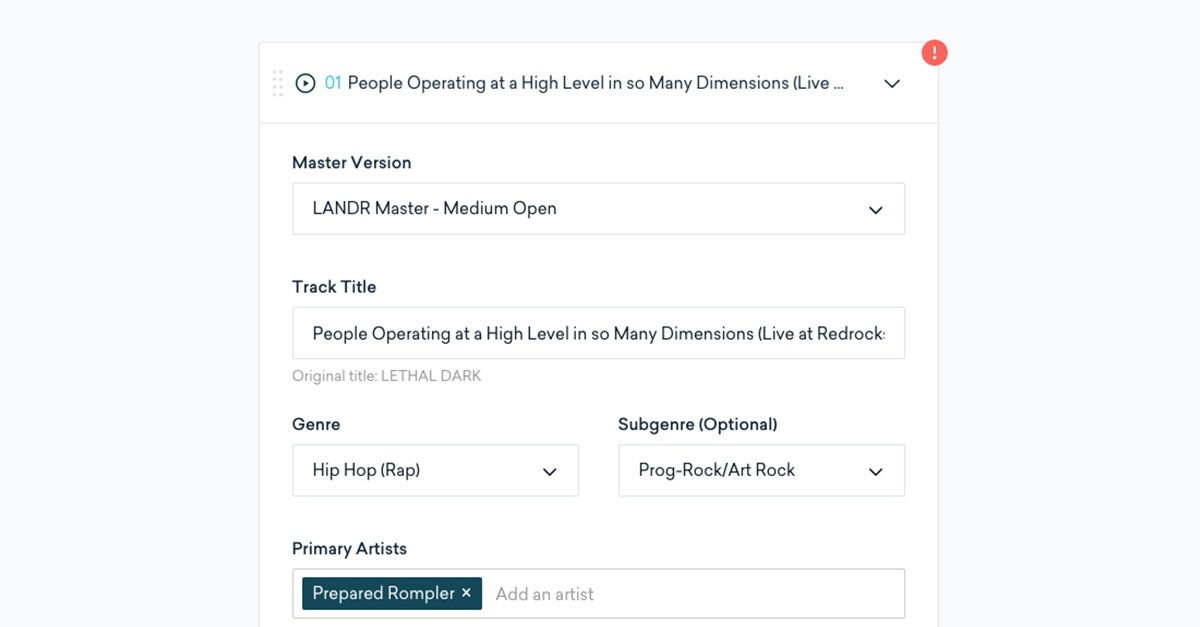The future of music distribution comes down to three words: Metadata for Musicians.
Metadata makes sure your songs are ready for distribution and launch. In case your metadata is not in order, your music simply is not ready to share…
The information you enter as metadata permits your music to be properly stored, sorted and identified everywhere your music is available. Which means platforms like Apple Music, YouTube, Spotify, and even Shazam.
It makes your music discoverable.
Your music royalties are additionally dependent on your metadata. Without correct data attached to your music, you run the risk of not receiving the proper credit for your streams.
And that might mean losing your paycheque. Being skilled with your music means being skilled with your metadata. You could not have one without the other.
The solution? Get it right before you launch so your music could be properly identified no matter where it is played.
In this article, you will learn what metadata for mucsicians is, how to make your music discoverable and how to make sure you are getting recognized for your work.
What is music metadata for musicians?
Music metadata is the information included in audio files used to identify, label and present audio content.
Metadata is utilized by every major device and music streaming application including smartphones, Spotify, Apple Music, YouTube, and all other major online music services.
Metadata consists of info like artist, genre, label, song titles, album name, and track numbers.
Metadata started as basic data encoded directly into the files on a CD. Today it refers to any info that needs to accompany a music file on streaming services or digital stores.
Streaming platforms depend on metadata. It’s more essential than ever. Without metadata, your tracks would have no context—just anonymous files in the sea of data online.
Think about it this way: the more detailed your metadata is, the simpler it’s to deliver your music to the right listeners.
Skimming over your metadata is like sending your music to the airport with no passport, no boarding pass, no cash, and no neck pillow. It isn’t going to reach its destination without lots of confusion and stress.
That is why strict conventions for metadata are vital for major streaming platforms such as Apple Music and Spotify.
It’s additionally why metadata issues could stop your launch in its tracks. If the metadata is incomplete or incorrect, it will not make the cut for digital distribution.
How does metadata work?
Metadata used to be written into a particular part of the file that did not contain audio. That is how metadata on CDs and other media was originally stored.
Metadata could still be included this way. You could add it to your own files utilizing tagging tools such as Kid3.
It isn’t a bad idea to include metadata directly in your WAVs, however, streaming services nearly always depend on the metadata submitted by your digital distribution to identify your music.
That’s why you have to be extra careful to get it right.
In terms of submitting metadata for streaming services, your digital distributor will take care of sending it—when you enter it for them properly.
How to get your metadata for musicians right
Here is a full list of the info you should confirm before you could distribute your music successfully:
- Track Title: the name of your track
- Genre: the primary genre of your track
- Subgenre: the secondary genre
- Primary Artist: the main artist on the track. You should enter this exactly the same method for every track in the launch.
- Featured Artists: any other artists featured on the track. Don’t write featured artists in the primary artist field—that is what this one is for!*
- Composer: The person who wrote or contributed music for the track
- Publisher: The publisher representing the composer. Enter the composer name again if there is no publisher.
- Producers: the producer(s) credit on the track
- Additional Contributors: Anybody else that worked on that song that needs to be credited ISRC: The unique identifier that offers your track its own digital fingerprint.
- Specific Content: indicates whether the song includes explicit content.
- Lyrics Language: the language of the sung lyrics
- Lyrics publisher: The publisher representing the lyricist/lyrics contributor
- Composition Owner: The owner of the composition rights
- Year of Composition: The year the track was composed
- Master Recording Owner: the owner of the sound recording
- Year of Recording: The year the recording took place.
- Release Language: The language of the release itself. Even in case you are intending to distribute your launch in a different country or territory the release language has to be the language of the metadata you’re entering.
This list may seem excessive, however, it’s worth it to enter as much of it as you possibly could.
4 mistakes of metadata for musicians to keep away from
Metadata is how streaming services do high-quality control on their platforms.
Meaning if something is not quite right, your launch will not make it.
Metadata that does not conform to the rules will stop your launch from making its method to stores.
Here are 4 important steps to verify your metadata does not cause any issues with your launch.
1. Triple-check your spelling and formatting
Make sure that to always spell your track and artist names correctly and exactly the same method each time.
Your spelling and formatting have to be consistent every once you credit an artist name, whether it is yourself as the primary artist, or anybody else as the featured artist.
Even if you should enter names multiple times, never abbreviate them or add further punctuation.
If you must enter an extra artist or contributor use the “+” icon to add a further field to the form.
It’s essential not to mix artist names, like “Toots & The Maytals” unless you need your launch to show up on an entirely separate artist profile on digital platforms.
Don’t add a number of contributors as a list in a single field.
2. Enter the correct release language
The release language field indicates the language and character set of your launch.
Even when the language of the lyrics is different, use this field to enter the language of the metadata you have been filling in.
3. Don’t try to manipulate the system
Metadata for musicians that do not give meaningful info is not helpful and does not contribute positively to the quality of your launch on streaming services.
Take an easy strategy for the guidelines for metadata.
Do not misrepresent information about your style or subgenre for impact. This solely makes listeners (and algorithms) confused!
4. Take note of your album artwork
Album artwork completely has to be consistent with the metadata entered for the release. You must give the artwork the same level attention to detail as the rest of the details about your launch.
When major streaming platforms say that they do not tolerate URLs, social media handles or excessive text in album artwork, they mean it.
Attempts to drive visitors outside of the platform bring down the overall sense of high quality on streaming services—do not bother with those sorts of tactics.
Having accurate, clear and consistent info is what is going to benefit your music in the long run.
Keep in mind that these outlets pay large fees to maintain top artists in their libraries. If you would like your content to be introduced alongside the top names in music you have to respect their rules.
Metaphysical release
Your track’s metadata is what makes it a quality product on a streaming service.
Getting it right is essential for getting that product to audiences.



